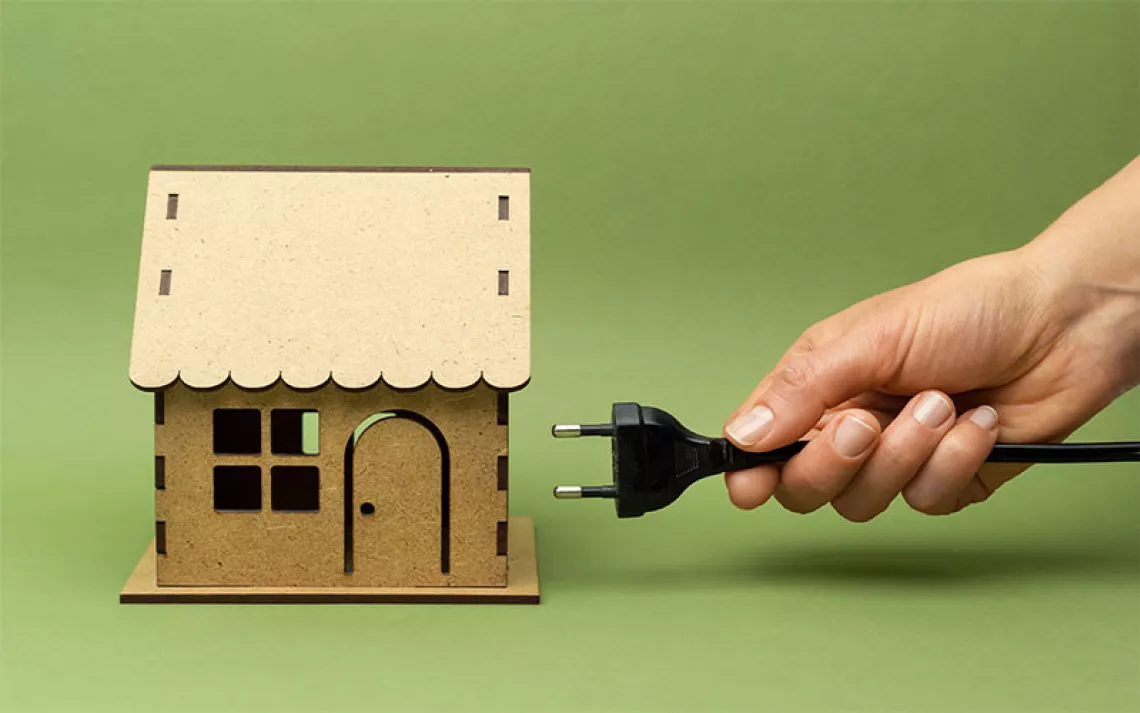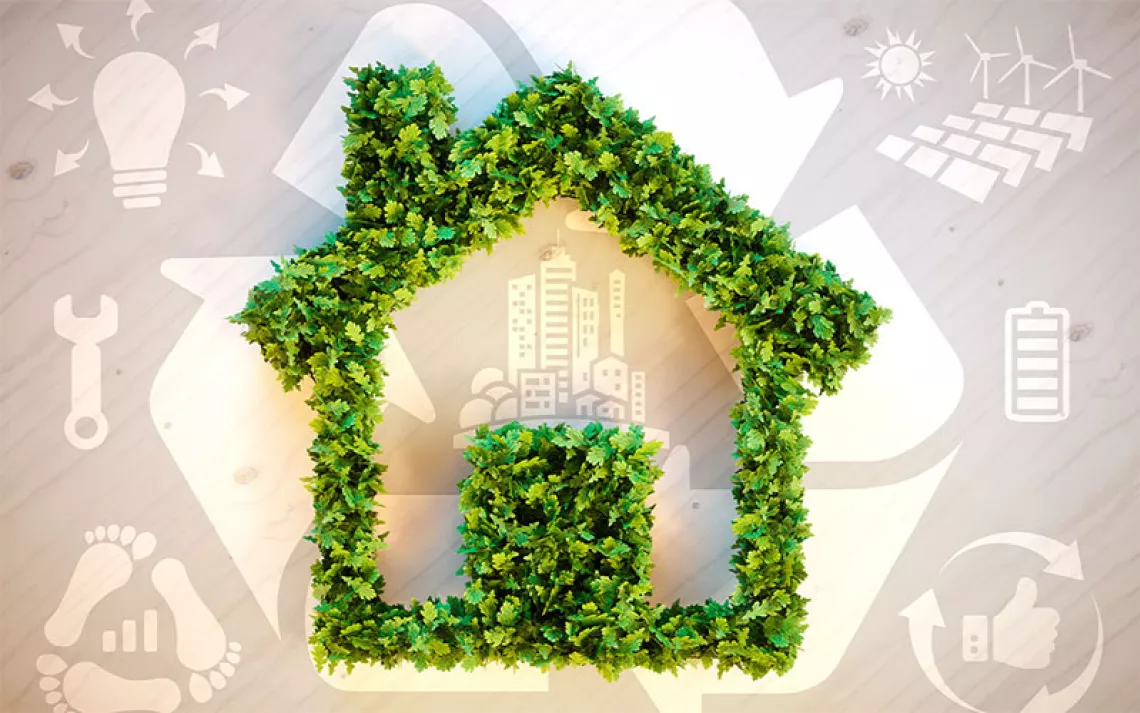Electrifying Your Home Is Good for You
And for the environment

Photo by iStock | Ssuaphoto
Your house is at the front line of the climate fight. In 2017, the residential sector accounted for about 16 percent of US natural gas consumption. Currently, about half of the homes in the United States use gas for heating, cooking, and drying clothes.
Natural gas—once hailed as a less-polluting replacement for coal—is still a climate pollutant. It was responsible for 10 percent of US emissions in 2017, according to the EPA. That figure may be a conservative estimate, since a significant amount of gas leaks into the atmosphere during its production and delivery.
Indoor pollution
Americans began to pipe gas into homes in the late 1800s—first for light and then for cooking and heating. It was an improvement over the coal that it replaced in terms of air quality, but it has always carried its own risks. Gas stoves can release carbon monoxide, formaldehyde, and other harmful pollutants into the air, at levels that are toxic to people and animals. “Researchers have been finding that gas stoves are producing dangerous levels of indoor pollution, levels that would be illegal outdoors,” says Bruce Nilles, a senior fellow at the Rocky Mountain Institute, where he focuses on building electrification.
The risks that gas poses extend to outside the home as well. “These gas pipelines are under us—under our homes and streets—and they are aging and leaking methane,” says Nilles. “Many fires after earthquakes are caused and fueled by gas leaks. This infrastructure is just extremely dangerous.”
How soon is too soon?
In 2019, more than a third of America's electrical supply will come from gas, much of it the product of fracking. Some utilities make it possible to opt-out and buy electricity that does not come from gas (in California, PG&E runs two programs: Solar Choice and Regional Renewable Choice). But if you can’t opt out, does it make sense to replace gas appliances if your electricity will still be coming from a gas plant?
It does. Electric appliances are three to five times more efficient than their gas-powered counterparts, says Rachel Golden, senior campaign representative at the Sierra Club. “We should not wait for a 100 percent clean-energy grid to begin electrifying our homes and buildings. Advanced electric appliances like heat pumps are so efficient that they will reduce greenhouse gas emissions even if they use electricity from a gas plant.”
For California, replacing gas with clean electricity, especially for space and water heating, can bring down greenhouse gas (GHG) emissions from single-family homes by up to 90 percent within the next three decades, according to a recent report published by Energy + Environmental Economics (E3), an energy consulting firm. That would make electrification one of the most cost-effective ways to reduce and eventually remove air and climate pollution from indoor spaces.
How to get there
New residences in California that are built all-electric will save money compared with building a gas-heated home, with net savings of $130 to $540 per year, according to numbers crunched by E3. On average, all-electric homes cost $5,000 less to build than a home that includes gas.
In homes that are already built, the majority of those with air conditioning (about two-thirds in California) will save on utility bills by switching from a gas furnace and air conditioner to an electric heat pump system that provides heating as well as cooling.
But the upfront costs for equipment and installation (especially installation) can sometimes be higher than sticking with less efficient gas appliances, creating a hurdle for people wanting to make the switch. Sometimes contractors don’t have the required information to help someone building or renovating their home to transition.
“Job training and creating a state-based clearinghouse of experienced contractors and HVAC professionals is important so people can find someone easily in their area who is experienced with fuel-switching,” Golden says. Upfront rebates, similar to the ones available for buying electric vehicles or installing rooftop solar, would also defray costs and help more people to opt in.
Before you make the switch
Plan ahead. If you’re going to remodel, start thinking about how you might make the switch—whether it’s all at once or over the next few years. Bruce Nilles of the Rocky Mountain Institute began by replacing his gas appliances and turning off the gas meter. Then, when he could afford it, he added rooftop solar panels and purchased an electric car.
Check the electrical panel of your home and make sure it can support the additional load that will come from adding new appliances. If not, be sure to upgrade the panel first.
Find the right contractor. A good one will be able to help you find out what rebates you qualify for and help you add other energy efficiency measures like insulation.
 The Magazine of The Sierra Club
The Magazine of The Sierra Club



